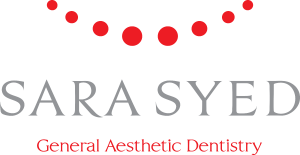Did you know that pregnancy can have an impact on your oral health?
Do you know how to care for your teeth during pregnancy?
Did you know that babies start to develop teeth during the first few months of pregnancy?
From the second to the eighth month of pregnancy, there are major shifts in hormone levels which can trigger gingivitis, a precursor to gum disease. In fact, progesterone levels can increase by ten times their normal levels when you are expecting. Moreover, nausea and vomiting and the sugary cravings that accompany many pregnancies can wreak havoc on your teeth. While not all pregnant women experience gum disease and tooth decay, there is a direct connection between hormonal changes that happen during pregnancy and overall oral health. The good news? These conditions typically resolve themselves once the baby is born, and you are unlikely to have major dental issues if you already have great oral hygiene prior to becoming pregnant.
“Inflamed gums result from changes in mouth bacteria that feed on the extra hormones secreted during pregnancy, and in the overall increase in fluid levels in the body as the pregnancy progresses,” says Dr. Arthur Worth, ODA President. “Regular professional dental cleanings and the patient’s personal home care are key to reducing the inflammation that can occur during pregnancy and the chances of developing severe gingivitis – tell your dentist if you are pregnant and if you have observed any changes in your oral health.” – Arthur Worth, Ontario Dental Association President
What to Look Out for During Pregnancy
- Gums that look inflamed or swollen
- Gums that bleed when you brush
- Dry Mouth or increased saliva in mouth
- Red nodules near your upper gum line and around your mouth
Visiting Your Dentist During Pregnancy
- Book a dental exam during your first three months of pregnancy and tell your dentist if you are expecting.
- Schedule a dental cleaning (or multiple cleanings) throughout your pregnancy to reduce the risk of gum disease.
- Book essential dental work (fillings, crowns etc) during your second trimester or after the birth of your child.
- Reschedule any dental x-rays until after the birth of your child.
Self-Care for your Teeth During Pregnancy
- Curb those pregnancy cravings as much as you can by limiting sugary foods and drinks.
- Continue to brush your teeth in the morning and before bed.
- If you have a lot of nausea and especially vomiting, be sure to rinse thoroughly with water to reduce acid damage.
- Floss every day.
- Use a fluoride-based toothpaste.
- Stay hydrated to combat dry mouth.
- Avoid antibiotics or sedatives.
Are you pregnant or planning to get pregnant? Book an appointment with our team at Dr. Syed Dentistry today to learn how you can protect your own oral health and the oral health of your baby.




